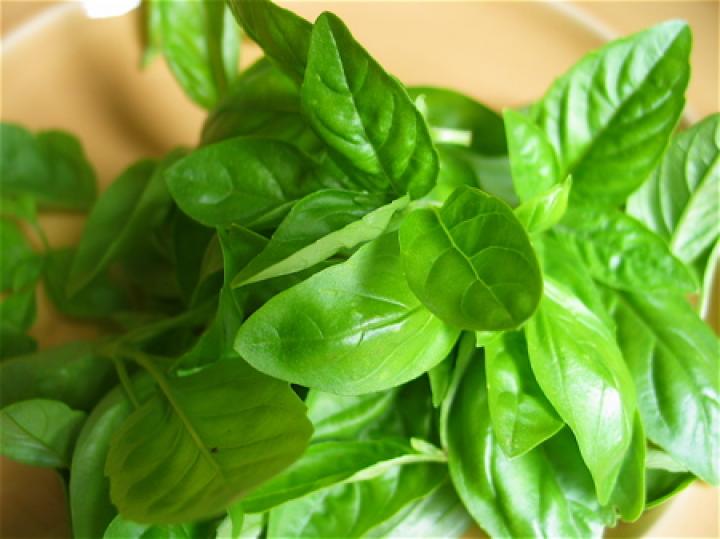
Basil is a leafy, fragrant annual with a bushy appearance. The most common type of basil is sweet basil; other types include purple basil (less sweet than common basil), Lemon basil (lemon flavor), and Thai basil (licorice flavor). Basil is easy to grow and works well in Italian dishes, but it only grows in the summer, so plan accordingly.
Planting
- To get a head start, start the seeds indoors 6 weeks before the last spring frost.
- Ensure your outdoor site gets 6 to 8 hours of full Sun daily; soil should be moist and well-drained.
- After the last frost date, plant the seeds/seedlings in the ground about ¼-inch deep. The soil should be around 70ºF for best growth.
- Plant the seeds/seedlings about 10 to 12 inches apart. They should grow to about 12 to 24 inches in height. For smaller plants, plant farther apart (about 16 to 24 inches).
- During the dry periods in summer, water the plants freely.
- Remember to pinch out the flower heads as soon as they appear to make sure that the leaves will continue growing.
- If you’re planning on cooking with these plants, plant in clean soil (don’t use fertilizers that leave harmful residues) and grow them away from driveways and busy streets so that exhaust won’t settle on the plants.
- Tomatoes make great neighbors for basil plants in the garden.
Care
- Make sure that the soil is moist. Basil plants like moisture. If you live in a hot area, use mulch around the basil plants (the mulch will help keep the soil moist).
- Make sure to pick the leaves regularly to encourage growth throughout the summer.
- After 6 weeks, pinch off the center shoot to prevent early flowering. If flowers do grow, just cut them off.
- If the weather is going to be cold, be sure to harvest your basil beforehand, as the cold weather will destroy your plants.
Pests/Diseases
- Aphids
- Variety of bacterial and fungal leaf, stem, and root diseases
Harvest/Storage
- After the seedlings have their first six leaves, prune to above the second set.
- Every time a branch has six to eight leaves, repeat pruning the branches back to their first set of leaves.
- The best time to harvest is right when the plant starts to bud (before the flowers bloom).
- Basil is most pungent when it is fresh.
- If pruned regularly, twelve basil plants will produce 4 to 6 cups of leaves per week.
- The best method for storing basil is freezing. Freezing will prevent the plant from losing any of its flavor. To quick-freeze basil, dry whole sprigs of basil and package them in airtight plastic bags.
- Another storage method is drying the basil (although some of the flavor will be lost). Pinch off the leaves at the stem and place them in a well-ventilated and shady area. After 3 to 4 days, if the plants are not completely dry, place them in the oven on the lowest heat setting with the door slightly open. Remember to turn the leaves (for equal drying) and check them frequently.
Recommended Varieties
- Cinnamon basil, to add a hint of cinnamon to a dish
- Purple basil, to add some nice color to your garden (when steeped in white vinegar, it creates a beautiful color)
- Thai basil, to add a sweet licorice flavor to a dish.
- Find more tips on varieties of basil for your garden.
Wit & Wisdom
Where salt is good, so is basil. –Italian saying
For other greens to use in your cuisine, see the Leafy Greens: Health Benefits page.
Recipes
- Tomato, Basil, and Mozzarella Sandwiches
- Basil & Garlic Stuffed Quail
- Basil Tart






